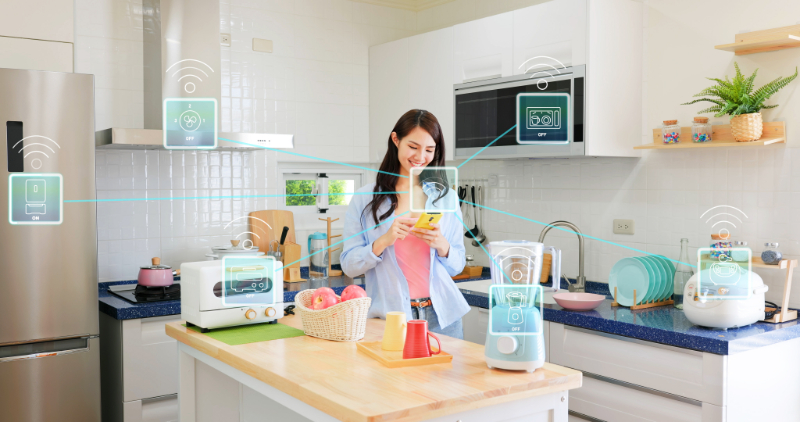
Back then, the idea of having a “smart” home was a completely alien concept. Controlling appliances wirelessly, seeing who’s at the door through a video doorbell, and getting the weather forecast from a voice-activated device seemed like a world away.
Now, countless homes throughout the world are decked out in smart tech. We have smart shower heads, window blinds, locks, refrigerators, washing machines, and a whole host of innovative devices that futurists used to dream about.
While smart home technology used to be reserved only for early adopters and the affluent, cheaper hardware, advances in manufacturing, and fierce competition from electronics companies have made it more affordable and accessible than ever.
You don’t need to spend a fortune to equip your home with cutting-edge devices. Here are some initial steps to lay a foundation you can build on over time.
Smart lighting
Smart lighting is the most common entry point into smart home tech. They’re affordable, simple to install, and can interact with other smart devices like Google Nest and Amazon Echo even without a central lighting hub.
Smart bulbs from TP-Link, Cree Lighting, and LIFX, for example, can be controlled through Wi-Fi, while newer models – like the latest Philips Hue smart bulbs – connect directly to your smartphone via Bluetooth.
Home security
Smart security cameras allow you to keep a watchful eye on your home even if you’re miles away. Indoor models are great for monitoring your children or pets. Meanwhile, outdoor models are designed to deter trespassers and help secure items outside of your home.
There are models from companies like Netatmo with integrated lighting and real-time alerts, and doorbells from Ring that allow you to communicate with visitors, even when you’re away from home.
Smart thermostats
A smart thermostat is a worthwhile addition to any home since it delivers both comfort and energy savings. Its ability to detect whether you’re away or at home and automatically adjust indoor temperatures ensures an efficient and fully optimal HVAC system.
Among the newest innovations on this front are remote sensors. You can place these in rooms you spend the most time in, like your bedroom or home office. With remote sensors, your smart thermostat will operate based on where you are exactly in the home, instead of simply running cycles based on the thermostat’s location (which is usually in a hallway or common area).
Smart smoke detectors
Smart smoke and carbon monoxide detectors do more than just blare out an alarm. They will instantly send an alert to your smartphone and authorized contacts when it detects danger.
Models like the Google Nest Protect have integrated emergency lights to help you find your way out amidst smoke. Other models like the First Alert Onelink have advanced voice alerts that tell you the type and location of danger in your home.
The components listed above are some of the most accessible and affordable starting points to designing a smart home. There’s no hard and fast rule, however. If you think that the smart refrigerator you’ve been eyeing will greatly enhance your lifestyle, then go for it!
For more helpful tips, head to this page. If you’re looking for the best Chagrin Falls, Ohio homes for sale, get in touch with me, Michelle McQuade by calling 440.823.2448 or sending an email.

